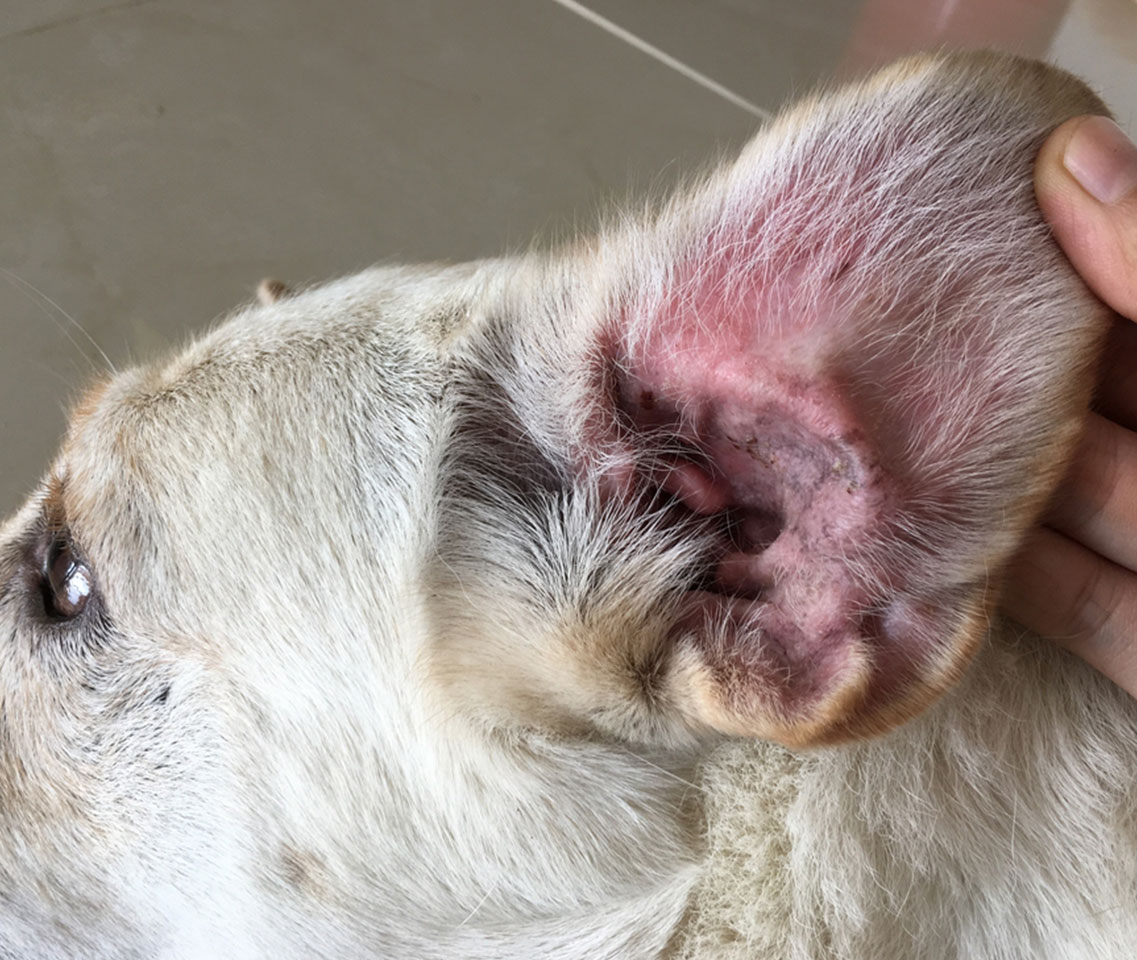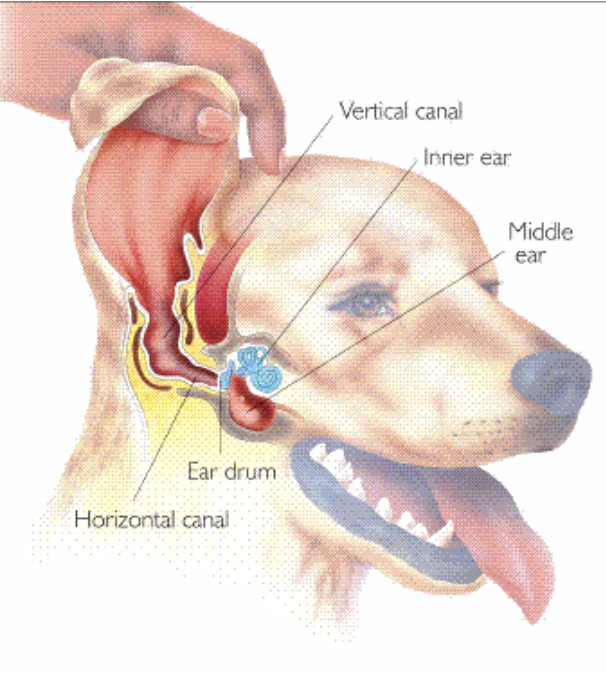Introduction:
Inner ear infection in dogs, also known as otitis interna, is a condition that affects the delicate structures within the ear. In this comprehensive article, we will explore the causes, symptoms, diagnosis, treatment options, and prevention strategies for inner ear infections in dogs. By understanding this condition and its management, dog owners and veterinarians can work together to provide timely intervention and improve the well-being of dogs affected by inner ear infections.
Inner Ear Infection in Dogs: An Overview:
Inner ear infections in dogs can occur as a result of various factors, including bacterial or fungal infections, foreign bodies, trauma, or underlying conditions such as allergies or immune-mediated disorders. The inner ear is a complex structure responsible for hearing and balance, and when it becomes infected, it can lead to significant discomfort and functional impairment for dogs.
Recognizing the Symptoms:
Identifying the symptoms of inner ear infection in dogs is crucial for early detection and intervention. Common signs include:
- Head Tilting and Loss of Balance:
Dogs with inner ear infections may tilt their heads to one side or have difficulty maintaining balance. They may stumble, fall, or exhibit a lack of coordination.
- Ear Pain and Sensitivity:
Dogs may show signs of ear pain, such as pawing at the affected ear, shaking their head, or exhibiting signs of discomfort when the ear is touched.
Recommended:
- Petco Review: The Power of Together
- PetSmart Review: Where Pets Inspire Us
- Hill’s Pet Nutrition Review: Pioneering Pet Health and Nutrition
- Royal Canine Review: Tailored Nutrition for Every Pet
- Chewy Review: Pet Care at Your Doorstep
- Abnormal Eye Movements:
Inner ear infections can affect the vestibular system, leading to abnormal eye movements, such as nystagmus (involuntary eye jerking) or rapid eye flicking.
- Changes in Hearing:
Dogs with inner ear infections may experience a decrease in hearing ability or exhibit signs of hearing loss.
Diagnosing Inner Ear Infection in Dogs:
Diagnosing inner ear infections in dogs requires a thorough examination and diagnostic tests. These may include:
- Physical Examination:
The veterinarian will perform a detailed examination of the dog’s ears, looking for signs of inflammation, discharge, or abnormalities.
- Otoscopy:
Using an otoscope, the veterinarian will visualize the ear canal and eardrum to assess the presence of infection, inflammation, or foreign bodies.
- Imaging Techniques:
Radiographs (X-rays) or advanced imaging modalities such as computed tomography (CT) or magnetic resonance imaging (MRI) may be used to evaluate the inner ear structures and identify any abnormalities.
- Cytology and Culture:
Samples of ear discharge may be collected and examined under a microscope (cytology) or sent to a laboratory for culture to identify the specific bacteria or fungi causing the infection.
Treatment Options for Inner Ear Infection in Dogs:
The treatment of inner ear infection in dogs aims to address the underlying cause, alleviate symptoms, and promote healing. Treatment options may include:
- Medications:
Antibiotics or antifungal medications are commonly prescribed to treat the infection. Topical ear drops or systemic medications may be used, depending on the severity and type of infection.
- Ear Cleaning:
Proper ear cleaning techniques using veterinarian-recommended cleansers can help remove debris, discharge, and excess wax, promoting a healthier environment for healing.
- Pain Management:
Pain relief medications may be prescribed to alleviate discomfort and improve the dog’s well-being during the healing process.
- Supportive Care:
In some cases, dogs with severe inner ear infections may require additional supportive care, such as intravenous fluids or nutritional support, to aid in their recovery.
Prevention of Inner Ear Infections:
Preventing inner ear infections in dogs can be accomplished through several strategies:
- Regular Ear Cleaning:
Routine ear cleaning using appropriate products and techniques can help prevent the buildup of debris and wax, reducing the risk of infection.
- Avoidance of Irritants:
Minimizing exposure to potential irritants, such as allergens or foreign objects, can help reduce the risk of inner ear infections.
- Prompt Treatment of Underlying Conditions:
Addressing and managing underlying conditions, such as allergies or immune-mediated disorders, can help prevent recurrent inner ear infections.
- Regular Veterinary Check-ups:
Regular veterinary check-ups allow for early detection and treatment of any potential ear issues, reducing the risk of complications and chronic infections.
Conclusion:
Inner ear infections in dogs can cause significant discomfort and functional impairment. By recognizing the causes, symptoms, and treatment options discussed in this article, dog owners and veterinarians can work together to provide timely intervention and improve the well-being of dogs affected by inner ear infections. Prevention strategies, regular veterinary care, and prompt treatment of underlying conditions are key to reducing the risk of inner ear infections and maintaining optimal ear health in dogs.
References:
- Cole, L. K. (2019). Otitis media and otitis interna. Veterinary Clinics: Small Animal Practice, 49(5), 927-945.
- Griffin, C. E., & Kwochka, K. W. (2017). Otitis externa and otitis media. In Muller & Kirk’s Small Animal Dermatology (8th ed., pp. 696-744). Elsevier.
- Nuttall, T. (2019). Canine otitis externa and otitis media. In BSAVA Manual of Canine and Feline Dermatology (4th ed., pp. 175-187). BSAVA.
- Scott, D. W., Miller, W. H., & Griffin, C. E. (Eds.). (2013). Muller & Kirk’s Small Animal Dermatology (7th ed.). Elsevier.



